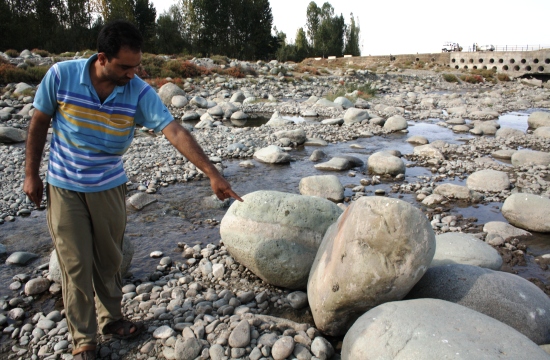
Ahanger’s wife, Nelofar, 22 and sister Asiya, 17, had gone to their orchard in Shopian periphery on May 29. They did not return, and a hunt till midnight failed to trace them. Next morning, Nelofar’s body was recovered at a spot that had been scanned by police and the family many times during the night. Asiya’s body was traced some one kilometre downstream by villagers of Arhama. Claiming that the two ladies have drowned, police launched inquest proceedings. Realising that for the two young ladies drowning in ankle-deep waters was impossible, people agitated. Both the victims had deep wounds – one on head and another on ankle, and to the family it was clear that the women were raped as well.
Police failed to uphold the law when the bodies were recovered. Mobs were permitted to take over as a result of which crucial evidence was lost. A local team of doctors was summoned for the post mortem and it had been half way when it fled because of the mob chaos. At the height of chaos and confusion, Dr Nighat Shaheen was summoned from Pulwama for gynaecological examination. Accompanied by two senior doctors, she had to literally beg for basic things like slides, reagents and gloves. Finally three slides were given to her. She took swabs and one of the slides fell down and broke. After she hinted that the women have been violated, she was driven back to Pulwama. Slides were sent to FSL and after an inordinate delay, it confirmed rape.
By then, the damage was done as Chief Minister Omar Abdullah was misled by the police to take their version. “Primary findings indicate that they were neither raped nor murdered and they actually drowned,” Omar told a crowded news conference on June 1. “But the situation is such that people are not ready to believe. They believe otherwise. So the coalition government has decided that a judicial commission probes and submits a report within a month.” This triggered a larger crisis. Shopian closed indefinitely and almost every day there were clashes.
Justice (Retd.) Muzaffar Jan who headed the commission lived up to expectations. His interim report led to the suspension of the four police men and an FSL official. A day later, Dr Nighat was also placed under suspension. Justice Jan’s final report, termed by noted constitutional and Kashmir expert, A G Noorani, as ‘monumental fraud’ opened a can of worms.
Barring the conclusion that the policemen at ground level have failed to prevent the destruction of evidence, the report in itself proved to be a testimony of the efforts made to divert the investigations. Rather than leading to perpetrators, it indulged in character assassination of the slain and the bereaved family. With Justice Jan later backtracking form portions of the report, a controversy erupted as he blamed investigation officer Dr Haseeb Mughal who was supposed to assist the commission for the objectionable portions. Eventually the commission got discredited.
However, it was the judiciary alone that initiated some action in the case. A Special Investigation Team (SIT) was constituted and later all the suspended cops were formally detained for the interrogation. The case went to the apex court which stayed part of the order. Their blood samples were taken and sent to CFSL. As the report was awaited, there was a leak. A Chennai based newspaper reported that the DNA profile of tissue cells present in the slides sent by the Jammu and Kashmir police do not match with the samples from the victims’ blood and viscera. “Put simply, the slides supposed to have been prepared from vaginal swabs of the victims were drawn from other women.” The report reached SIT a day after the leak and on Wednesday it was submitted to the division bench monitoring the investigations.















